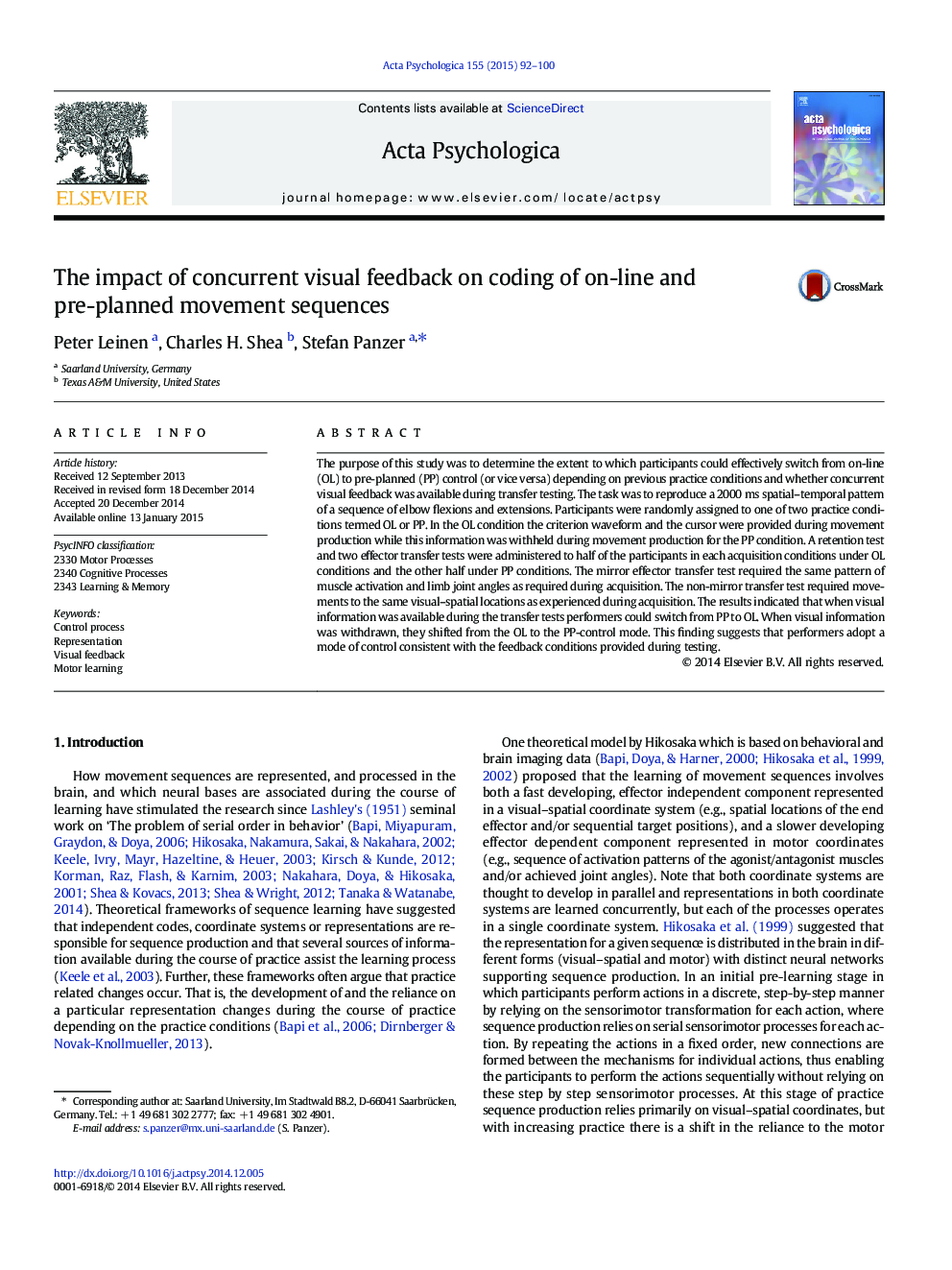| Article ID | Journal | Published Year | Pages | File Type |
|---|---|---|---|---|
| 7277521 | Acta Psychologica | 2015 | 9 Pages |
Abstract
The purpose of this study was to determine the extent to which participants could effectively switch from on-line (OL) to pre-planned (PP) control (or vice versa) depending on previous practice conditions and whether concurrent visual feedback was available during transfer testing. The task was to reproduce a 2000Â ms spatial-temporal pattern of a sequence of elbow flexions and extensions. Participants were randomly assigned to one of two practice conditions termed OL or PP. In the OL condition the criterion waveform and the cursor were provided during movement production while this information was withheld during movement production for the PP condition. A retention test and two effector transfer tests were administered to half of the participants in each acquisition conditions under OL conditions and the other half under PP conditions. The mirror effector transfer test required the same pattern of muscle activation and limb joint angles as required during acquisition. The non-mirror transfer test required movements to the same visual-spatial locations as experienced during acquisition. The results indicated that when visual information was available during the transfer tests performers could switch from PP to OL. When visual information was withdrawn, they shifted from the OL to the PP-control mode. This finding suggests that performers adopt a mode of control consistent with the feedback conditions provided during testing.
Keywords
Related Topics
Life Sciences
Neuroscience
Cognitive Neuroscience
Authors
Peter Leinen, Charles H. Shea, Stefan Panzer,
